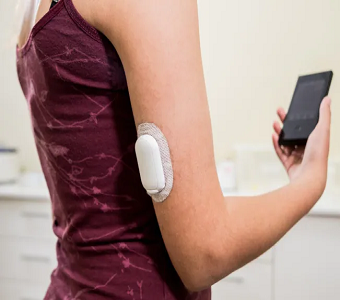With Thanksgiving weekend here, food is atop the mind of all Americans. We thought it only appropriate to give an update on the obesity field.
Big Pharma Dominates Space
According to Evercore ISI, there are 54 obesity programs from 37 different companies. Big pharma dominates the space, with Lilly (LLY) and Novo (NVO) leading the commercial and development pipeline.
Other big pharmas such as Boehringer Ingelheim, Amgen, Pfizer are trailing with Phase 2-3 programs.
In early November, AstraZeneca announced that they had licensed an oral GLP-1 from Chinese company Eccogene for $185M upfront and up to $1.825B in milestones. ECC5004 is a once daily, GLP-1 agonist currently in a US Phase I clinical trial in healthy participants and patients with T2D.
Notably, Merck, JnJ, Roche, BMY and Novartis are missing in action and could be on the hunt to in-license a molecule.

As seen above, the GLP-1 mechanism dominates the obesity landscape as a single agonist, and also as combination in dual-agonist approaches such as GLP-1 + GIP (Lilly’s tirzepatide), GLP-1 + glucagon (BI’s survodutide) and GLP-1 + amalyin (Novo’s cagrisema).
Where Do Small Companies Fit into Landscape?
Given obesity’s broad scope and competitive landscape, big pharma is better positioned to tackle the indication. Obesity trials require several pivotal studies with thousands of enrolled patients which cost north of $200M. If/when an asset reaches commercialization, the sales infrastructure is too large for a small company to tackle alone. These will inevitably act as tailwinds for small-mid-cap companies such as Viking (VKTX), Structure (GPCR), Terns (TERN).
For this same reason, we think that Carmot (CRMO) could see their upcoming IPO struggle, especially if the enterprise value ends up being north of $2B. Carmot has filed for an IPO before year end 2023, raising a rumored $100M. The company is running two Phase 2 trials for their GLP-1/GIP injectables and a Phase 1 for an oral GLP-1.
Smaller companies are likely to be better positioned by focusing on niche applications that are currently unmet needs or other mechanisms that big pharma has neglected. Unmet needs in obesity include improving the gastrointestinal side effect profile, preserving muscle loss and competing with lower priced alternatives to existing commercial GLP-1s. While newer mechanism of actions being explored include ACVR2B and GDF-15 for muscle preservation, CB1 for appetite and energy expenditure and NPY2 for energy storage release from fat.
Even for trailing big pharma companies with obesity assets, an overlooked risk as more obesity trials are being run, is the enrolment of patients in a placebo-controlled trial. First movers Novo Nordisk (with semaglutide) and Eli Lilly (with tirzepatide) used placebos for their control arms in the placebo-controlled trials. As the standard of care in obesity shifts to GLP-1s, late commers in the space might need to enroll a different control arm; one that uses an existing GLPL-1 as the comparator, rather than placebo. This ethical standard would “raise the bar” as late comer drugs would need to show superiority against a GLP-1 rather than placebo.
Public Companies Targeting Obesity from Different Angles
In July 2023, Lilly announced that it was acquiring Versanis for up to $1.9B for their lead asset bimagrumab, a monoclonal antibody that binds activin type II A and B receptors (ACVR2B) to block activin and myostatin signaling. Lilly is betting that combining incretins with bimagrumab has the potential to further reduce fat mass while preserving muscle mass.
This approach set the stage for a combination that could potentially preserve muscle while selectively targeting fat loss. Companies doing this include:
Keros (KROS): KER-065 is a selective activin receptor ligand trap that showed potent inhibition of ligands involved in the regulation of muscle and bone homeostasis, such as myostatin and activin-A. In preclinical models, KER-065 demonstrated that it can increase muscle mass, improve muscle function and prevent bone loss in mice. A Phase 1 is starting in 2024 to test potential of KER-065 in neuromuscular indications and metabolic syndromes, including obesity.
Scholar Rock (SRRK): SRK-439 is a myostatin inhibitor for the treatment of cardiometabolic disorders moving towards an IND submission in 2025. In preclinical studies, SRK-439 + GLP-1 achieved lean-muscle mass reversal and enhanced fat mass loss. To inform the development of SRK-439, Scholar Rock plans to initiate a Phase 2 trial of their first generation myostatin inhibitor apitegromab in combination with a GLP-1 receptor agonist in obesity in 2024 with data readout expected in mid-2025.
Biohaven (BHVN): Taldefgrobep is a myostatin inhibitor that blocks signaling of both myostatin and activin A, both key regulators of muscle and adipose tissue. In preclinical mouse models, taldefgrobep monotherapy significantly reduced fat and increased lean muscle mass. A Phase 2 obesity study with taldefgrobep in combination with GLP-1 is planned for 2024.
Upcoming Obesity Catalysts
- Pfizer’s danuglipron Phase 2b results by year end 2023.
Danuglipron is a twice-daily oral GLP-1. The benchmark for Pfizer’s drug will be Lilly’s own oral GLP-1 called orforglipron, which reported weight loss of ~13% out to 32 weeks.

If Pfizer’s danuglipron Phase 2b data is in-line with Lilly’s orforglipron, then Pfizer will start a pivotal Phase 3 with a reformulated once-a-day pill of danuglipron that the company has worked on. Pfizer’s data readout will have an impact on all oral GLP-1 names, including GPCR and Carmot’s upcoming IPO.
2. Structure (GPCR) topline data from GSBR-1290 Phase 2a diabetes cohort in December 2023
This is a relatively small trial for GSBR-1290, the once daily oral, with a 12 week duration. In the obese population, Phase 1b data came in line with other orals, so this trial in diabetes patients should be rather de-risked. However, at a $1.9B enterprise value, any hiccup in the data would likely lead to a GPCR selloff.

Access This Content Now
Sign Up Now!




